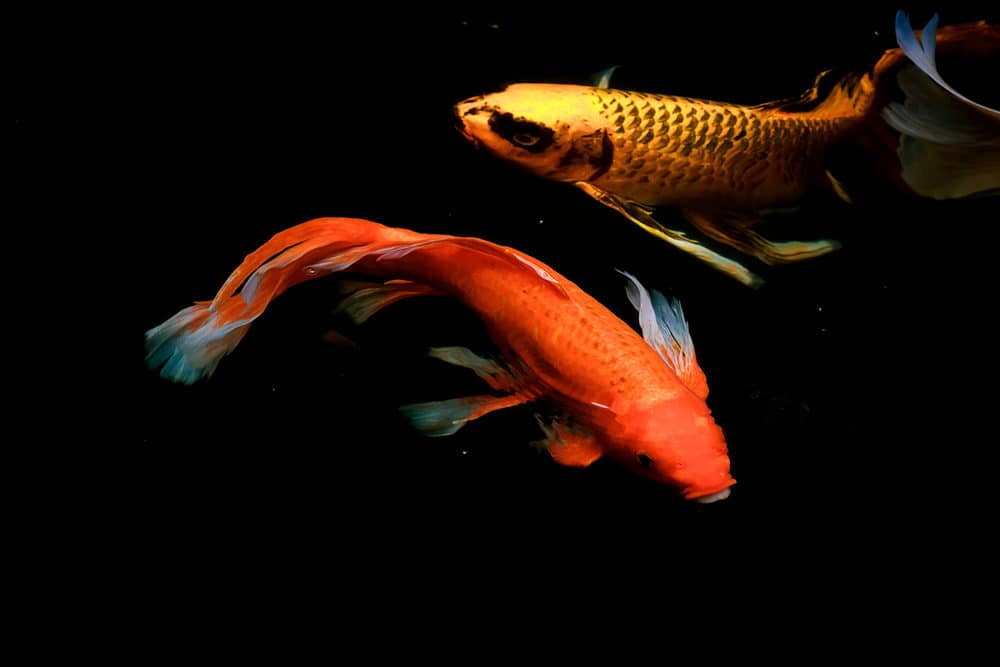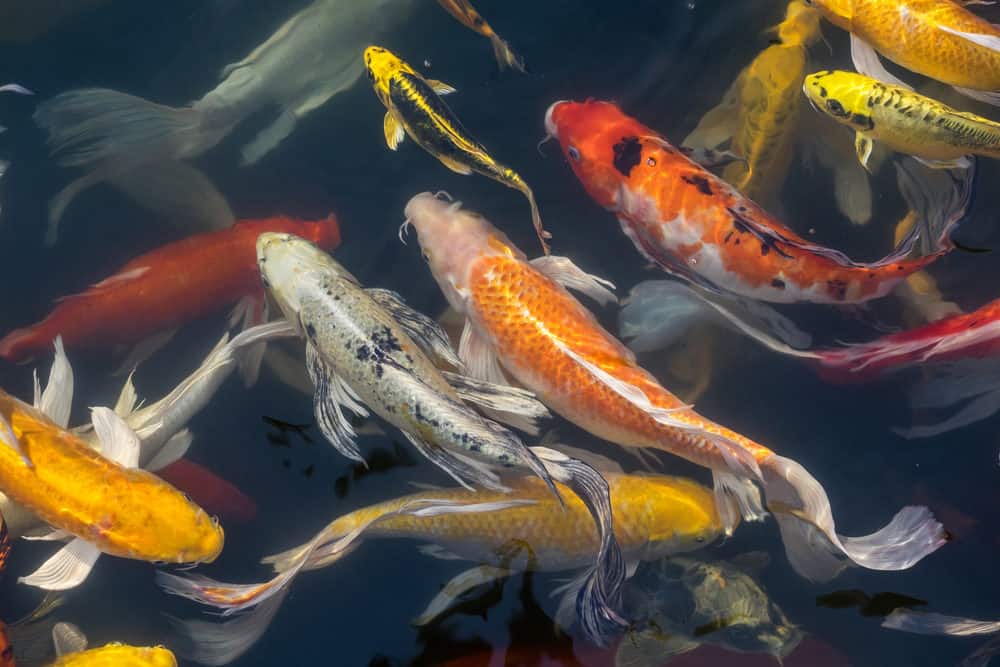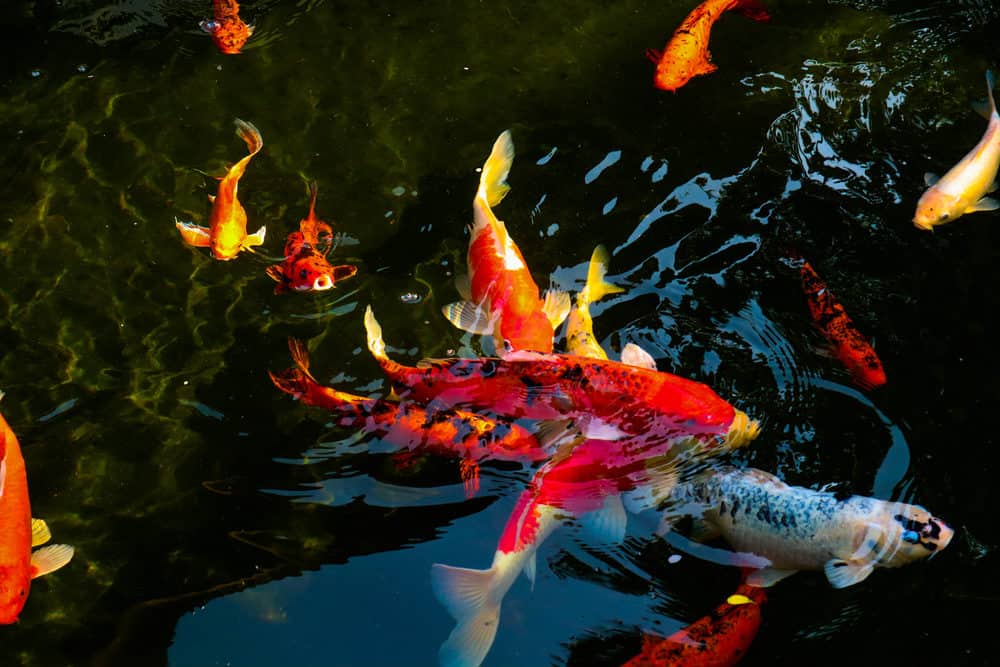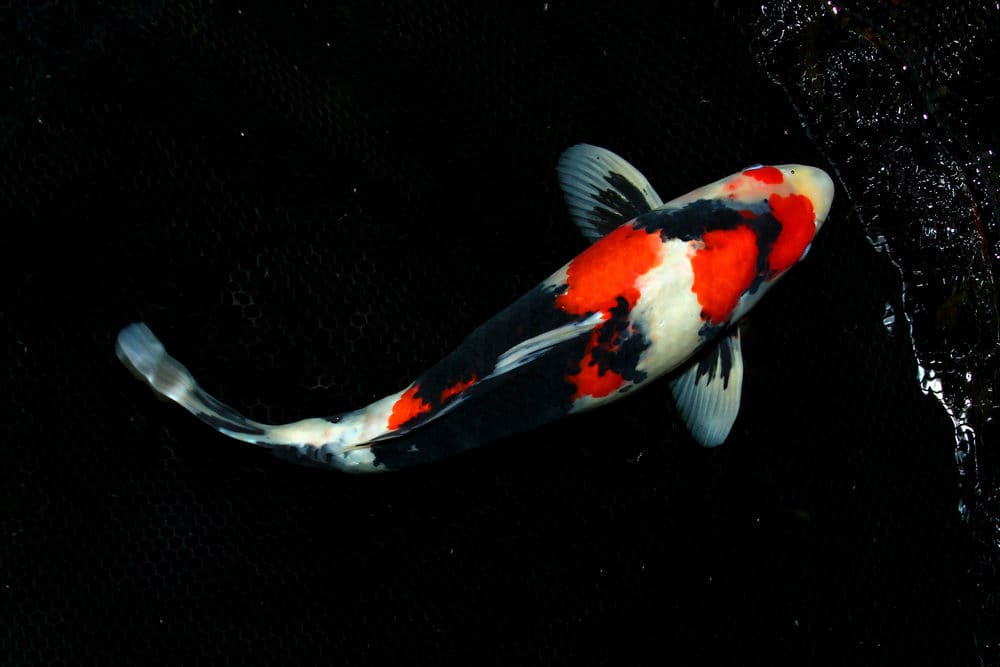If you notice that your Koi fish has a slimy coat, it might make you worried. However, did you know that some fish use slime to get them through droughts, and others use it to warn them of predators?

Even though Koi fish don't have these abilities (at least from what I've observed), I've witnessed first-hand how a slime coat on fish can impact its health-for better and for worse.
In this guide, I'll help you understand the use cases for slime coats, how to protect them, and how to manage slime coat disease.
The chances are you haven't handled your Koi fish much or at all. However, if you've ever gone fishing, you're undoubtedly familiar with the slimy goo that you have to wipe off your hands after taking the hook out of your latest catch.
Needless to say, a slime coating on fish is healthy in reasonable amounts. In fact, this mucus-like coat offers fish the following benefits:

Fish slime might even be a staple of human health soon. Scientists believe that fish slime could help solve the antibiotic resistance issue that many people currently face. So, the slime's ability to deter life-threatening infections may eventually supplement or replace traditional antibiotics.
Now that you know the importance of a slime coat, it's crucial to take measures to preserve it.
From experience, I can tell you that much of slime coat maintenance comes down to making sure your fish have a stress-free environment. You can do this by regularly testing the water in your Koi fish pond.
Below are items you should test for in your fish’s habitat:
You should also avoid handling your Koi fish. Grabbing them with a net or your hands often results in both an injured fish and a damaged slime coat that won't be able to do repairs. As a result, it opens the opportunity for a bacterial infection.

Another way that fish die from injury is that water gains access to the fish's scales. Since their slime coat regulates water flow in and out of their body, this process gets disrupted. As a result, the fish's body may take in too much water, causing bloat and death.
Needless to say, if you need to move your Koi fish, it's best to use a bucket or net to scoop them up.
Although slime is a vital component for fish, too much slime can signify an unhealthy fish. The aptly named slime disease is the result of a parasitic infection.
As you can probably guess, parasites have an easier time latching onto a fish's skin when it has a damaged slime coat.
Signs that your Koi fish has slime disease include:

When a fish moves their gills fast, it indicates they're stressed. For this reason, you might also hear people refer to slime disease as a "stress coat."
Sadly, the slime coat on fish with slime disease can be so thick that it eventually covers the gills completely. As a result, the fish is unable to breathe and dies.
Since slime disease is from a parasite, your first step should be to place the infected fish into a quarantine tank. Then, head to your pet store or veterinarian and tell them about the problem. Slime disease is pretty standard, so they should have Anti Slime and Velvet treatment products on hand.
Don't worry you don't have to capture your sick fish and give them the medicine directly. Instead, follow the instructions on the bottle, which will tell you to administer a specific amount based on the size of your quarantine tank.

Sometimes when treating fish for slime disease, medication can reduce the amount of oxygen in the water. Therefore, it's wise to put an air pump in the water during treatment.
Pond salt is also a valuable tool for helping your Koi fish overcome slime disease. It boosts the water's electrolytes and reduces harmful nitrite. While you're at it, go ahead and add this salt directly to your Koi pond too.
Protecting your fish against slime disease is similar to caring for the slime coat on fish in general. After all, the reason why a parasite takes hold of a fish's skin is often the result of injury to its coat.
Nevertheless, physical injury isn't the only way to deteriorate a fish's slime coat; if your Koi pond is off-kilter with its water quality, your fish will undergo stress. The more stressed your fish are, the more likely they'll have trouble maintaining a healthy slime coat.

Most fish share a broad range of ideal water quality. Nevertheless, when working with a Koi pond, you should ensure it meets the following fields to ensure your fish maintain a healthy slime coat.
Regarding temperature, Koi fish have an impressive tolerance. They can thrive in water that's iced over as well as water that's hot on a summer day. Nevertheless, the speed at which the temperature changes affects whether they'll have an adverse reaction that impacts their slime coat.
Try keeping a thermometer in your pond - that way, you can monitor the temperature during extreme temperature swings. A good rule of thumb is that you don't want your Koi pond heating up or cooling down by more than four degrees per hour.



